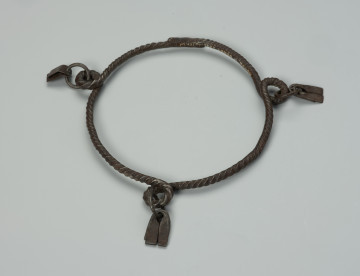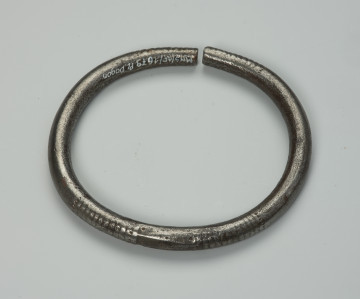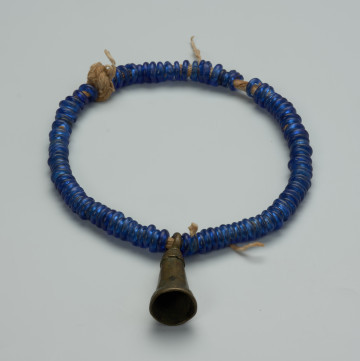
Men's bracelet
około 1940
National Museum in Szczecin
Part of the collection: Collection of Dogonian art
Dogon women formerly wore a rare type of two-piece bracelet on the leg at the ankle level, which was put on by a blacksmith and only removed after death. The Dogon believe that an ornament of this type is an embodiment of life forces, which is why it should be removed after death. Dogon women sing a typical funeral song also confirms the custom of removing the bracelet from a deceased woman: 'Chosen woman, chosen woman, she removed her broad bracelet' and 'From the best woman, from the best, the great bracelet was taken away'. During the funeral ritual, the bereaved women's relatives also removed their ornaments to form a pyre, which was displayed in public for several days. They wished to honour the deceased in this way. After the funeral, the personal ornaments of the deceased were usually placed on the family altar. The Dogon believe that they are inspired by nyama - the life force of the ancestors and therefore need regular sacrifices. Bracelets were sometimes removed from the altar and worn. It was done by relatives suffering from health problems since they were believed to be imbued with healing power derived from the spiritual strength of the ancestor. The dead were not buried in such bracelets because brass was a precious material.
Other names
men (sogo-bo language)
Author / creator
Object type
body adornment, bracelet
Technique
lost-wax casting, forging, engraving
Material
brass
Origin / acquisition method
donation
Creation time / dating
Creation / finding place
Owner
The National Museum in Szczecin
Identification number
Location / status

około 1940
National Museum in Szczecin

około 1940
National Museum in Szczecin

między 1920 — 1930
National Museum in Szczecin
DISCOVER this TOPIC
Museum of King Jan III's Palace at Wilanów
DISCOVER this PATH
Educational path